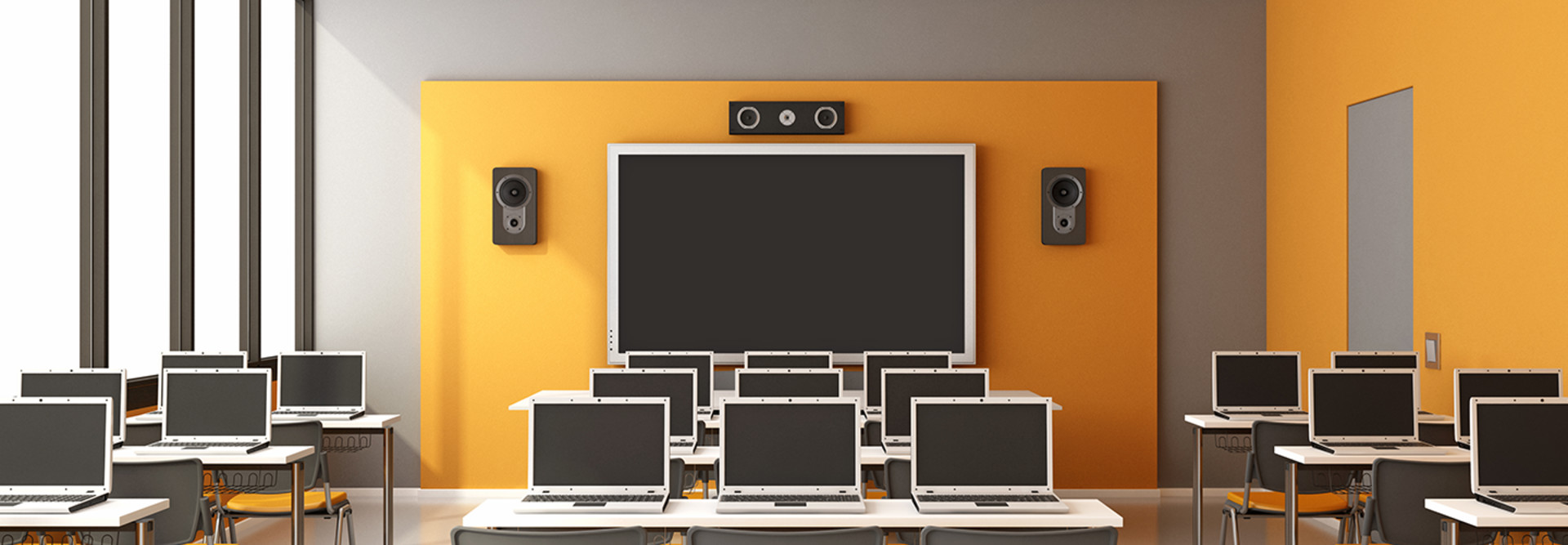UBTech2018: Why Consistency and Collaboration Are Key for Classroom Design
The chalkboard classrooms of the past are fading fast, and many colleges find themselves pressed to imagine new types of learning spaces. Modern classrooms — reliant on technology and capable of supporting a variety of teaching scenarios — require institutions to be thoughtful in planning for such spaces and preparing faculty members to take advantage of them.
Representatives of Midlands Technical College in South Carolina discussed those themes, along with their own strategies, in “Renovating and Constructing Brick-and-Mortar Classrooms for Twenty-First Century Education,” presented Tuesday at the 2018 UBTech Conference in Las Vegas.
With six campuses and one off-campus teaching site, MTC serves approximately 14,500 credit students and 13,500 continuing education students in more than 250 classrooms. For the MTC Media Services team, a priority is making sure that no matter which classroom an instructor enters, the technology tools and user experience will be accessible, easy to use and, above all, consistent.
Although roughly a third of MTC’s students take at least one class online, face-to-face learning remains the backbone of the institution, said Barbara Mooneyhan, director of media services. And as at every institution, future-proofing is always a concern, said Vice President for Institutional Support Starnell Bates.
“We don’t want our classrooms to become dinosaurs before they’re even used for very long,” Bates said.
Mooneyhan and Bates presented along with MTC President Ronald Rhames and Technology Support Manager Beth Rickenbaker.
SIGN UP: Get more news from the EdTech newsletter in your inbox every two weeks!
Develop a Relationship with Your Construction Teams
A key component of the Media Services team’s classroom planning strategy is to get involved, early and often, with architects and other construction team members during the design and build phases of new construction and renovation projects.
“Get to know the personnel, particularly the electrician,” Rickenbaker said.
She said she meets with MTC’s construction project manager regularly and, as construction progresses, joins weekly walk-through tours to ensure plans are proceeding as intended and unforeseen obstacles don’t hamper the planned deployment. It’s not unusual, she said, for issues to arise that simply couldn’t have been predicted during planning.
In one project, for example, Rickenbaker learned that the east-facing windows in a classroom let in so much light that projector usage would have been infeasible. So, she worked with the architects to find a window covering that would maintain the desired functionality. In another case, she learned that part of the HVAC system was too close to the planned location of a projector and would have caused unwanted vibrations, so she was able to make adjustments.
“You never know when something like that will come up at the last minute that you didn’t anticipate on paper,” Rickenbaker said.
She also works with architects to ensure there is enough flexibility to accommodate the inevitable substitutions in equipment. Often, she said, when it’s time to actually place the order, models have changed or other issues have arisen, so Media Services needs to pivot to a different item. Planning for these eventualities, and coordinating with the architects, saves headaches down the road, said Rickenbaker.
Build In Training Opportunities for Campus Staff
MTC also ensures that technicians have a solid understanding of the classrooms they’ll eventually support. When possible, MTC opts for an owner install of new equipment, a tactic that saves money and gives staff a chance to get a sense of ownership of the rooms — along with a thorough grasp of the systems, Rickenbaker said.
“Training our personnel is one of our biggest goals,” she said.
The next step is to ensure faculty feel prepared to use new classroom tools. To that end, MTC has a comprehensive training process, with emphasis on new instructors and those who are new to distance learning. Among other resources, the team creates a standard operating procedure document that faculty can refer to, and it’s designed to be as user-friendly as possible.
“We identify who will be using the room and get them in early” for training, Mooneyhan said.
If an instructor needs more help, he or she can also reach out to the Media Services help desk, where someone can walk them through a problem or, if needed, send out a technician. That resource is “one of the best things” the college has done, Mooneyhan said.
Media Services also uses help desk records to track support requests, so it can identify an individual instructor (or a specific classroom) that may benefit from extra help. And just to make sure the help desk stays top of mind for instructors, Media Services gives every classroom a custom-designed mouse pad that includes its phone number.
For more UBTech coverage, check out our events page.









